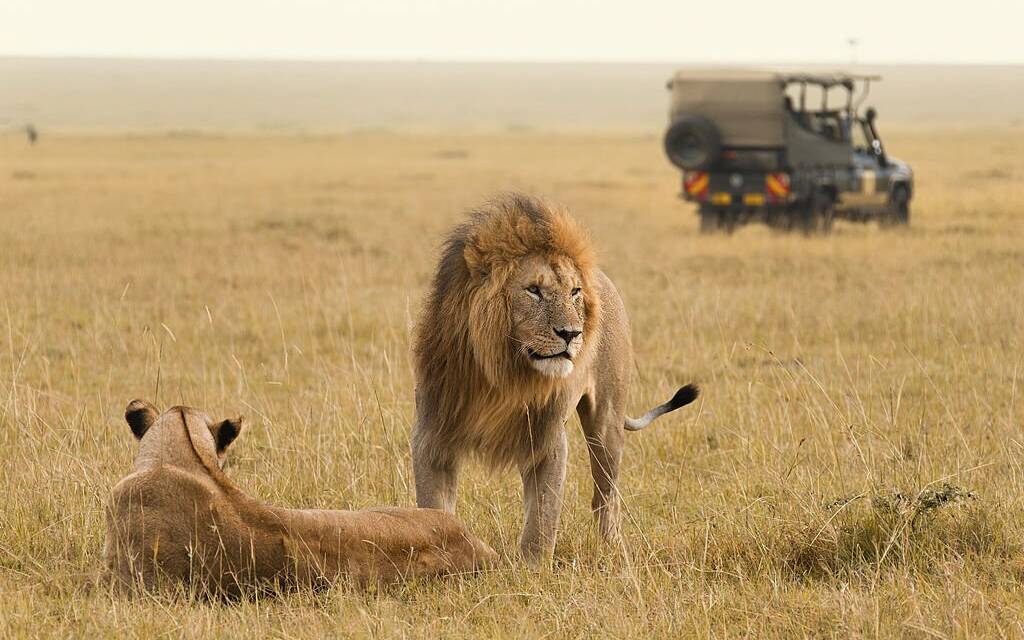Introduction
Best time for safari in Kenya
Kenya, a land of rich biodiversity and stunning landscapes, offers one of the most captivating safari experiences in the world. From the iconic Maasai Mara National Reserve to the lesser-explored Samburu National Reserve, Kenya is a wildlife enthusiast’s paradise. But choosing the perfect time for a safari is crucial to optimizing your wildlife sightings and overall experience. In this article, we will delve into the allure and diversity of Kenyan safaris, understand the importance of timing, and explore the popular wildlife destinations in the country. So, gear up for an adventure, and let’s dive into the wonders of Kenya!
Understanding the Allure and Diversity of Kenyan Safaris
Kenyan safaris are renowned for their awe-inspiring encounters with majestic wildlife and the breathtaking landscapes they call home. The country boasts an exceptional range of ecosystems, including savannahs, forests, lakes, and mountains, which contribute to diverse habitats for a vast array of animal species. From the Big Five (lion, leopard, elephant, buffalo, and rhino) to zebras, giraffes, cheetahs, and wildebeests, Kenya is teeming with captivating wildlife. The opportunity to witness these incredible creatures up close in their natural habitat is what draws countless visitors to the country every year.
The importance of Choosing the Best time for safari in Kenya
Best time for safari in Kenya While Kenya offers safari experiences year-round, selecting the right time for your adventure can greatly enhance your experience. Factors such as weather conditions, wildlife migrations, birdwatching opportunities, crowds, and cultural festivals all play a role in determining the optimal time for a safari. By considering these elements, you can make the most of your trip and create unforgettable memories.
Overview: Best time for safari in Kenya Popular Wildlife Destinations
Kenya is home to numerous iconic wildlife destinations, each with its own unique characteristics and attractions. The Maasai Mara National Reserve is perhaps the most famous, renowned for its vast savannahs and an annual spectacle known as the Great Wildebeest Migration. Amboseli National Park offers breathtaking views of Mount Kilimanjaro and is known for its large herds of elephants. The relatively remote Samburu National Reserve is a hidden gem, famous for its unique northern species such as Gravy’s zebras and reticulated giraffes. Other notable destinations include Lake Nakuru National Park, Meru National Park, and Tsavo National Park. Embark on a safari to one or more of these remarkable destinations, and you are sure to be mesmerized by Kenya’s wildlife wonders.
Factors to Consider When Planning a Safari and Best time for safari in Kenya
Planning a safari requires careful consideration of various factors that can significantly impact your experience. Let’s explore some key factors you should keep in mind when deciding on the Best time for safari in Kenya.
Weather Conditions and Climate Patterns in Kenya
Dry Season: Perfect for Wildlife Viewing
The dry season, which typically runs from June to October, is the prime time for wildlife viewing in Kenya. With reduced vegetation and scarce water sources, animals gather around rivers and watering holes, making it easier to spot them. The weather during this period is generally pleasant, with warm days and cool nights, providing an ideal atmosphere for safari adventures.
Wet Season: An Alternative Experience with Unique Opportunities
While the wet season, from November to May, may be characterized by occasional rain showers, it offers a different perspective on the Kenyan wilderness. The landscape transforms into lush greenery, and many animals give birth during this time. Birdwatching enthusiasts will also be delighted by the vibrant displays of various migratory bird species. However, it is essential to note that road conditions can be challenging during heavy rainfall, affecting accessibility to certain areas.
Impact of Seasons on Accessibility and Road Conditions
During the wet season, especially in March, some remote areas might become temporarily inaccessible due to muddy and flooded roads. It is important to plan your itinerary carefully and consult with experienced safari guides or operators who can navigate the changing landscape.
Wildlife Migration and Best Time for Game Drives
The Great Wildebeest Migration: Witnessing a Natural Spectacle
One of the most awe-inspiring wildlife spectacles on the planet, the Great Wildebeest Migration, occurs between the Maasai Mara National Reserve in Kenya and the Serengeti National Park in Tanzania. The migration typically takes place from July to October, as millions of wildebeests, zebras, and other grazers seek fresh grazing grounds. Witnessing this remarkable event is a bucket-list experience for many safari-goers.
Prime Months for Game Drives to Spot Iconic Wildlife
If you are eager to spot the iconic Big Five and other wildlife species, the dry season is the best time for game drives. The months of July to September are particularly known for exceptional game viewing opportunities. During this period, the animals are concentrated around water sources, providing fantastic photographic opportunities and awe-inspiring encounters with the wild.
Lesser-Known Migrations and Unique Animal Interactions
While the Great Wildebeest Migration often steals the spotlight, Kenya is also home to lesser-known but equally fascinating wildlife migrations. The Loita Migration, a smaller-scale migration of wildebeests and zebras in the Loita Hills, occurs from December to March. Additionally, the Amboseli elephants provide a mesmerizing sight as they migrate between Amboseli National Park and the Tanzania Kilimanjaro ecosystem. Exploring these lesser-known migrations can offer a more intimate and off-the-beaten-path safari experience.

Birdwatching Opportunities and Avian Seasons
Birdwatching enthusiasts will find Kenya to be a paradise, with over 1,000 recorded bird species residing within its borders. Here are some key points to keep in mind when planning a bird-focused safari: And discover the Best time for safari in Kenya
Kenya Diverse Bird Species and Their Habitats
Kenya diverse ecosystems provide habitat for an impressive array of bird species. From the flamingos of Lake Nakuru to the martial eagles of the Maasai Mara, birdwatchers can spot a wide variety of colorful and elusive avian species.
Peak Months for Birdwatching Enthusiasts
The wet season, from November to April, is the best time for birdwatching in Kenya. During this period, migratory birds from Europe and Asia make their way to Kenya, resulting in an abundance of birdlife and vibrant displays of feathers.
Planning Bird-Focused Safaris and Recommended Locations
For birdwatching enthusiasts, incorporating specific locations into your itinerary is vital. Lake Naivasha, Lake Baringo, and Kakamega Forest are some of the top birding hotspots in Kenya. Don’t forget to bring your binoculars and camera to capture the stunning avian beauty on your trip.
Balancing Crowds and Budget Considerations
Weighing the Pros and Cons of Peak and Off-Peak Seasons
Peak seasons, such as the dry season between June and October, attract larger crowds and higher prices. However, they also offer the best wildlife viewing opportunities and pleasant weather. On the other hand, off-peak seasons like April and May bring discounted rates and fewer tourists. It’s crucial to strike a balance between budget considerations and the quality of wildlife sightings you desire.
Strategies to Avoid Crowds and Enjoy a More Intimate Experience
If you prefer a more peaceful and intimate safari experience, there are strategies to avoid crowds. Opting for lesser-known wildlife reserves or private conservancies can offer exclusivity and tranquility. Additionally, consider planning your game drives for early mornings or late afternoons when tourist numbers are typically lower.
Finding Budget-Friendly Options Without Compromising Wildlife Sightings
While Kenya offers luxury safari options, it is also possible to have a budget-friendly safari without compromising wildlife sightings. Look for mid-range accommodations or consider joining group safaris to share costs. Furthermore, selecting less-explored national parks and conservancies can often lead to incredible wildlife encounters without breaking the bank.
Cultural Festivals and Connecting with Local Communities
Festivals Celebrating Kenya’s Rich Cultural Heritage
Kenya is not only famous for its wildlife but also for its rich cultural tapestry. Throughout the year, various cultural festivals take place, celebrating Kenya’s diverse ethnic groups, traditions, and art forms. From the Maasai Mara Cultural Festival to the Turkana Cultural Festival, these events offer a unique opportunity to engage with local communities and immerse yourself in their vibrant traditions.
Incorporating Cultural Experiences Alongside Wildlife Encounters
To enhance your safari adventure, consider incorporating cultural experiences into your itinerary. Engaging with Maasai tribespeople, learning about traditional beadwork, or participating in a traditional dance ceremony can provide a deeper understanding of Kenya’s cultural heritage.
Months When Festivals Align with Optimal Safari Conditions
When planning your trip, researching which festivals align with optimal safari conditions can help you experience the best of both worlds. For example, the Maasai Mara Cultural Festival typically takes place in July, coinciding with the Great Wildebeest Migration. By syncing your safari with these cultural events, you can create a truly immersive and unforgettable experience in Kenya.
Summary of Optimal Safari Times Throughout the Year
When it comes to choosing the best time for your safari adventure in Kenya, here is a summary of the optimal safari times throughout the year:
January-March: Wildlife Calving, Fantastic Birding, and Fewer Tourists
This period marks the calving season for many species, such as wildebeests and zebras in the southern reserves. Birdwatching enthusiasts will also be thrilled by the influx of migratory birds, making it an ideal time for bird-focused safaris. Furthermore, the visitor numbers are generally lower during these months, allowing for a more private and intimate experience.
April-May: Lush Landscapes, Discounted Rates, and Fewer Crowds
While April and May are part of the wet season, they offer a unique experience with lush landscapes and fewer tourists. The discounted rates during this period make it an attractive option for budget-conscious travelers. However, be prepared for occasional rain showers and check road conditions before planning your itinerary.
June-August: Migration Crossings, Excellent Game Viewing, and Pleasant Weather
June to August is one of the most popular times to visit Kenya, thanks to the ongoing Great Wildebeest Migration. Witness the dramatic river crossings as the herds navigate treacherous waters in search of fresh grazing areas. The weather is generally pleasant, with cooler temperatures, making it an ideal time for outdoor activities and game drives.
September–October: Prime Time for the Great Wildebeest Migration
During September and October, the Great Wildebeest Migration reaches its peak as the herds make their way back to the Maasai Mara National Reserve. This period offers incredible wildlife viewing opportunities, with predator-prey interactions creating thrilling game drives. However, be prepared for the higher number of tourists during this time.
November–December: Fewer Tourists, Bird Migration, and Green Landscapes
As the short rains arrive, November and December bring fewer tourists, making it an ideal time for a more secluded safari experience. Birdwatching enthusiasts will also be delighted by the migratory bird species arriving in Kenya. The landscapes turn lush green, creating a vibrant backdrop for your wildlife encounters.
Conclusion
Understanding the Best time for safari in Kenya to embark on a safari adventure in Kenya is crucial for an unforgettable experience. By contemplating various factors such as weather, wildlife migrations, birdwatching, crowds, and cultural festivals, you can select a time that aligns with your preferences and interests. Whether you seek the spectacle of the Great Wildebeest Migration or want a more personalized encounter with nature, Kenya offers something for every wildlife enthusiast. Plan your safari wisely, and get ready to immerse yourself in the wonders of Kenya’s breathtaking landscapes and diverse wildlife.
